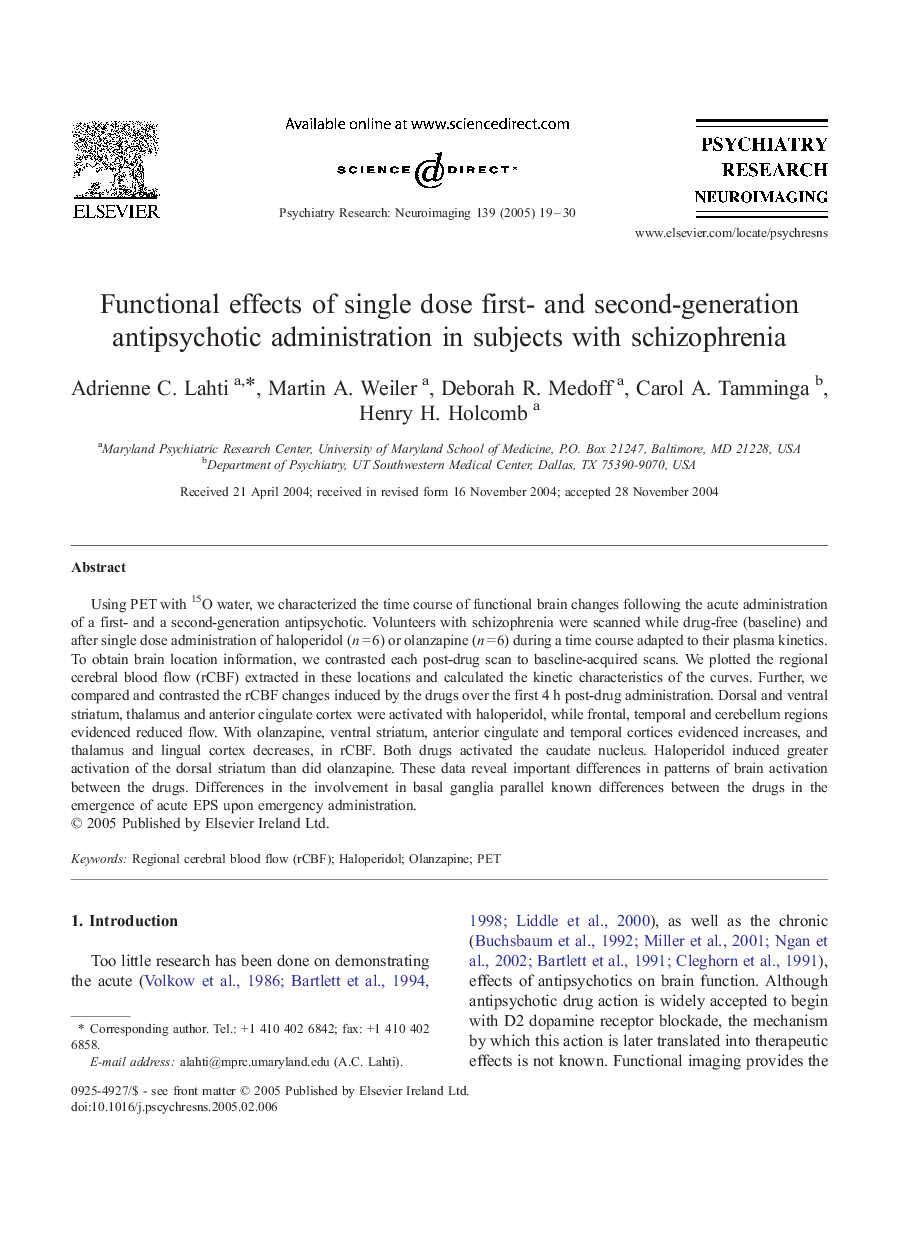| Article ID | Journal | Published Year | Pages | File Type |
|---|---|---|---|---|
| 10305415 | Psychiatry Research: Neuroimaging | 2005 | 12 Pages |
Abstract
Using PET with 15O water, we characterized the time course of functional brain changes following the acute administration of a first- and a second-generation antipsychotic. Volunteers with schizophrenia were scanned while drug-free (baseline) and after single dose administration of haloperidol (n = 6) or olanzapine (n = 6) during a time course adapted to their plasma kinetics. To obtain brain location information, we contrasted each post-drug scan to baseline-acquired scans. We plotted the regional cerebral blood flow (rCBF) extracted in these locations and calculated the kinetic characteristics of the curves. Further, we compared and contrasted the rCBF changes induced by the drugs over the first 4 h post-drug administration. Dorsal and ventral striatum, thalamus and anterior cingulate cortex were activated with haloperidol, while frontal, temporal and cerebellum regions evidenced reduced flow. With olanzapine, ventral striatum, anterior cingulate and temporal cortices evidenced increases, and thalamus and lingual cortex decreases, in rCBF. Both drugs activated the caudate nucleus. Haloperidol induced greater activation of the dorsal striatum than did olanzapine. These data reveal important differences in patterns of brain activation between the drugs. Differences in the involvement in basal ganglia parallel known differences between the drugs in the emergence of acute EPS upon emergency administration.
Related Topics
Life Sciences
Neuroscience
Biological Psychiatry
Authors
Adrienne C. Lahti, Martin A. Weiler, Deborah R. Medoff, Carol A. Tamminga, Henry H. Holcomb,
